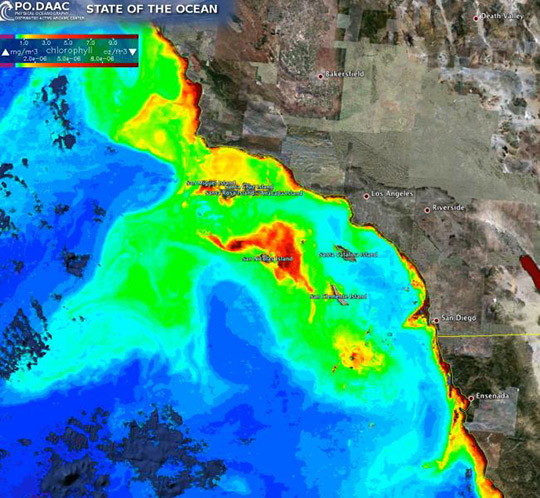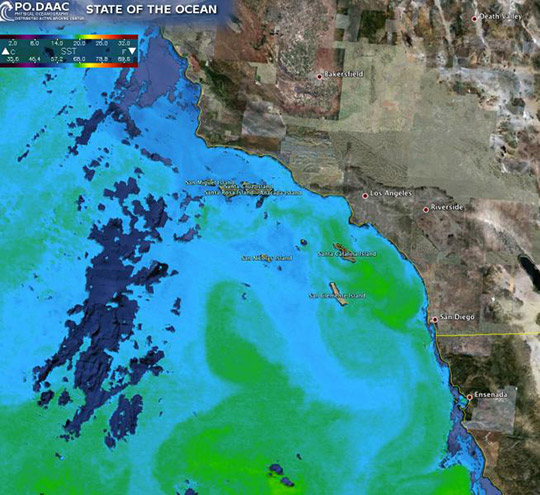Effects of Upwelling
Because the water that rises is colder than the surface water, the ocean temperatures in regions of upwelling are relatively cool. These cooler waters can keep temperatures over land relatively cool. Since this water is also rich in nutrients, areas of upwelling are very productive for fishing.

NASA MODIS - Chlorophyll
The yellow to red colors indicate high levels of chlorophyll (indication of phytoplankton biomass), extending well offshore as well as in narrow bands next to the coastline.

NASA MODIS - Sea Surface Temperature
Note the colder waters next to the coast and extending southward from central California along the Santa Barbara coast into Santa Monica Bay, indicative of coastal upwelling. High levels of chlorophyll often occur in areas of coastal upwelling, where cold waters come to the surface during periods when winds blowing southward parallel to coast (not shown) cause the coastal surface waters to move offshore. The colder waters contain nutrients, which combined with available sunlight, prompt phytoplankton growth.
Source: Coastal Upwelling and Harmful Algal Blooms in Southern California (September-October 2011) | NASA